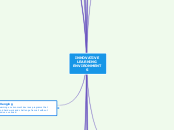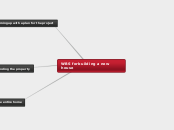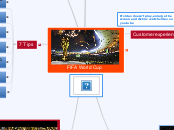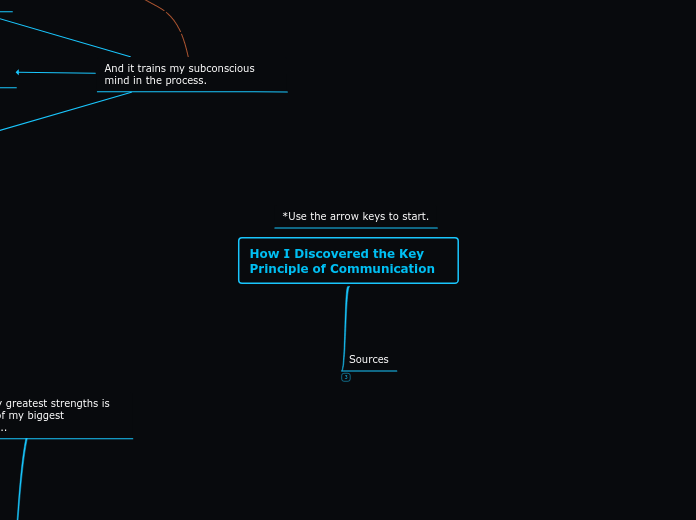INNOVATIVE LEARNING ENVIRONMENTS
Assessment as Learning
Assessment as Learning Is the use of ongoing self-assessment by students to monitor their own learning. Students reflect on their own learning and make adjustments so that they understand the concept better.
Ensure students know what is expected of them at the beginning, middle and end of each task
Assessment can be encouragement of a positive word or praise to just keep going.
Students must have opportunities to reflect on their learning so they can make connections
Building assessment as learning into your lessons is important. As a teacher it is important to make time and ensure that we are assessing by observing, checking in with our students on a regular basis and providing feedback helps identify the gaps and intervene as pessary.
Providing feedback to students is important. It needs to be clear and thorough. Students also need to know how to give proper feedback and assess their work.
Peer and self assessments are used on a regular basis. These assessments are directly aligned with the rubric for the assignment. Students give feedback to one-another in order to help their peers improve their work.
A really knowledgeable teacher can provide feedback throughout the unit to ensure that each student is keeping up and thriving within the class.
Have regular learning conferences with students. Help them to identify their strengths and weaknesses and to set reasonable attainable goals that they can work on.
Have students peer evaluate providing students feedback using two stars and one wish! (Two parts they did well and one area for improvement)
Assessment as Learning Is the use of ongoing self-assessment by students to monitor their own learning. Students reflect on their own learning and make adjustments so that they understand the concept better.
Challenging
The learning environment devises programs that demand hard work and challenge from all without excessive overload.
I've always believed in setting the bar high. At the very least students will strive to attain these goals. Some may achieve them and some may not. The importance is the development of a "can do" mindset which will support future growth.
Have high expectations for each student and push them to succeed at their own potential
Have students set goals and help them achieve these goals to help give them a challenge and a sense of accomplishment when they meet these goals
Students and teachers will try their best and will push each other to their potential
The teacher will work with students to develop their growth mindset to get the best results
Not only do students need to be validated in their learning but so do teachers and support staff. Teachers need strong leadership that will shape their learning.
Model respect and demonstrate how students should conduct themselves in and out of the classroom
Focus on mental health
Make myself available and approachable, and let students know that if they need to talk about something that is bothering them, that they should not feel intimidated to come talk to me
Students must feel comfortable to push their comfort zones and take risks.
Students need to be challenged in order to reach their full potential. Teachers need to provide the correct tasks for each student to achieve brain stimulation in each child.
Material needs to be difficult for students but not impossible to achieve. Relating this to elementary math, students year after year study the same topics w/o enough progress to make it stimulating and challenging. This leads to mental boredom and leads students to slaking off.
Students must feel challenged or they will be bored and disengaged in the class. It is important to challenge students without making them feel like the work is too difficult.
Often when you expect more from a child they work hard to meet those expectations. Many students become labeled through their past and that pigeon holes them into acting a certain way. Every day is a fresh start for our students to make positive choice and work to the best of their abilities.
Set your expectations high but attainable. Let your students know that you believe in them and know that they can do what you are asking of them. Praise all of their effort and help them learn from any mistakes they make.
Set your expectations high and don't settle for mediocrity. Students should feel they need to live up to your expectations, besides when they get there, there will be nothing but praises and a sense of accomplishment.
If you set high expectations, students will exceed them every time. Give them the opportunity to plan and choose when and what they will work on at any given time, allowing them to become independent and rise to the challenge.
Set High Expectations
I like to set high expectations for my students so they are continually striving to better themselves and achieve their own personal goals.
I will outline a plan for the students to follow so they are aware of upcoming activities and assignments. This will allow the students to organize their time and plan accordingly, avoiding any stress or an unmanageable workload.
Assessment for learning
The learning environment operates with the clarity of expectations and deploys assessment strategies consistent with these expectations there is strong emphasis on formative feedback to support learning.
Ongoing informal feedback on a day to day basis to provide clarity to students to ensure they have a clear sense of where they're going and what the destination looks like.
Without this feedback we have the typical learning skills fiasco. Students are informed about learning skills but are rarely guided and given examples of what these skills look like in action.
Always provide continuous feedback in many different ways, whether it's through conferencing, checklists, self-assessment, peer assessment so you know exactly where your students are, what they still need to be successful and what your next steps are. This allow for you to really get to know your students and their learning needs. Always give your students positive reinforcement.
I will provided clear, fair and equal opportunities for assessment and achievement. Collaboration of success criteria
3 things you learned, 2 things you found interesting and 1 question you have
Co-establish classroom rules
Apply progressive discipline plan and continuous descriptive feedback on students acceptable/unacceptable behaviour (ex. Pointing out how they are meeting Catholic Graduate Expectations)
When co-creating a success criteria, using "I can" statements is important so that the students understand what they should be able to do in order to be successful in the task. It is important that they know what the expectations are in a language that they are able to understand.
Creating success criteria with students is key. They will understand what they need to do in order to be successful.
Formative feedback is very important. I try to use a combination of written feedback along with a short conference with the student. This allows the student to explain his or her work and me to answer any questions they may have about my feedback. As others have stated, clear success criteria, such as a checklist or a rubric, is a necessity.
Posting success criteria in students friendly words allows each of our students to understand what is being asked of them.
Formative assessment is important in the classroom. Students should receive constant feedback and opportunities to use that feedback. Formative assessment improves performance and achievement.
Provide Clear Instructions and Rubrics (Handout)
It is important when assigning assessments students be given clear instructions and something that they are able to refer back to for further clarification. They should also be provided with a rubric so they understand how to be successful. This will reduce ambiguity for students and parents in completing assignments.
Outline/rubric of success criteria for assignments
I will outline success criteria and learning goals for the students to follow when engaging in activities and assignments
I will outline clear expectations for the students to use as a guide and constantly refer to in the school
The social nature of learning
The learning environment is founded on the social nature of learning and actively encourages well-organized co-operative learning.
Evolving groups over the course of the year so students develop the ability to work with different personality types. A valuable skill set which tends to be a learned skill.
Learning is as important outside the classroom as it is inside
Students and teachers challenge others, challenge others ideas, have a willingness to learn and work together on a variety of tasks
Group activity (classroom bonding) for students to get more familiar with each other
Community outreach for classroom bonding and modeling leadership skills and sense of community
We have started to incorporate math talks/number talks which allow the students to share their strategies for solving math questions. Students build upon each others' strategies using words like "I agree", "I see what you did and I would add...". By doing this it allows students to share their ideas without putting it down on paper. It is sharing our knowledge and thinking in an informal manner. It helps students feel validated and that their ideas matter. It also helps develop a community of learners, sharing ideas and learning from one another.
It is important to show our students how to properly work together. In Grade 1, some students are learning the skill of collaboration. It is important to teach our students what that actually looks like. In our society today, collaboration is very important and as educators, we need to develop this skill in our students.
Learning from each other is a critical part of human advancement, but needs to be balanced. Students need to be able to learn independently and in a group, both are equally important. Also, from my own experience and others, social leaning may have its own drawbacks if not all members are equally committed to giving their best.
I believe it is important to build a classroom to be the extension of the students home. This is where we are learning together. They need to be comfortable. If the environment is flexible for students, they are better able to engage in the material and chat about it with peers.
Partner and group work are important learning tools. Learning how to work with a wide variety of people (and their quirky personalities) will help these students as they move into the workforce.
We need to foster collaboration and encourage students to work together to learn what they need to learn. Humans are social creatures and, if we can get students interested in talking about the class work, we can make our classroom a great learning environment.
Outside of education we work together, we collaborate and we work on our strengths. This skills is important to develop within our public education systems. By working in a variety of groups with a variety of peers our students will develop a skill they will use throughout their lives.
A great amount of learning comes from the consolidation portion of my lessons. Once the students have attempted a task on their own/in partners/in small groups and we come together on the caret to discuss our findings, that is when higher level questions are asked and answered and when I see the light bulbs shine bright above my students heads. Every student has something to add to the class goal.
Ensure that students are reflected around the classroom. Have them participate in how the classroom is set up, the rules they follow and topic they are interested in learning about.
Incorporate Group Activities in Teaching; Collaborative Learning
Students learn best when they interact with their peers. By incorporating collaborative learning into my lessons students may feel more at ease to discuss and share their ideas. Example: four corners, placemats, or drama skits.
Subtopic
I will build positive relationships with parents, students, and staff, to ensure positive environment with constant communication
I will display student work around the classroom and the school so they can be proud of their hard work and accomplishments
In FSL classroom students work together and often help each other through reading, writing and oral tasks.
Regular positive learning happens every day, two times a day during our carpet time. Every student is sitting and (mostly) listening to my lesson. We have discussions before/during/after the lesson. We also have a end of day chat “What went well, or what I can improve on”. We use those as individual goals for personal growth in the classroom.
Differentiating Instructions
The single biggest challenge in my opinion especially as resources continue to be removed from the classroom. Getting to know your students capabilities quickly allows for the identification and creation of small learning groups based upon similar skill sets.
Get to know your students, not just their learning needs but their background, family life, interests, etc. to help differentiate your lessons accordingly
Differentiating Instructions helps our student succeed. When presenting lessons, it's important to recognize the way we are teaching our lesson.
Flexibility and adaptability are necessary components of a classroom for both students and teachers. Teachers need to constantly adjust their teaching strategies to the needs of their students. No class is the same.
Students need to learn at their level. Know your students' strengths and where they need help. It may be outlined in an IEP (e.g. repeat instructions, written instructions) or it may be unofficial. Give students options for assignments, such as an essay, a video, or spoken word for a Social Studies project.
By giving students options for assignments, you'll probably get their best work, and therefore most valid assessment.
Having programs well designed allows for each student to work at their level. Everyone is doing the same tasks and being challenged. It takes a great deal of time to set up but with a teaching community that shares it is possible to reach every student.
I try to tap into all of the different preferred learning styles present in my classroom by incorporating various methods into my teaching. This way I may be able to reach the majority of my students.
Create options for students to provide them with choice to help them choose what they need to feel successful. Ex. Different handouts with various numbers and size of lines.
Teachers design lessons based on students' interest, readiness or learning styles. The students are grouped by shared interest, topic or ability for assignments.
Horizontal Connectedness
The learning environment strongly promotes horizontal connectedness across areas of knowledge and subjects as well as to the community and the wider world.
Where possible, trying to connect real life across the curriculum in a meaningful way is ideal. Identifying common "threads" that can be combined to demonstrate real life scenarios is powerful and sticky for most students.
Connect lessons to all areas of the curriculum based on inquiry based lessons that you and your students created
Ensure lessons are connected to the real-world. More authentic learning comes from real-world connectedness and where students can relate and make connections to.
Students and teachers will share and learn about other traditions, ways of life, religion, etc in other countries. We can utilize the integration of technology to gain a rich understanding of the multitudes of individuals and communities ways of life
Students must feel their learning is meaningful and has purpose
Math is a perfect example of this concept. I always stress to students that math is in everything. It is one of the fundamental blocks of our lives so how can you hate it. It is important to students to see the applications of what they learn is used in real life and across many disciplines.
Cross-curricular connections and subject-to-world connections are very important. Life doesn't exist in a bubble. There is no "Unit 9-multiplication" in real life. Math is connected to many other things, including science, literacy, social studies, art, driving, looking for an address etc. The more we connect learning to real-life experiences the better the students will understand.
Cross-Curricular connections are important! They are also very helpful ! We connected Science with Math this year and it worked out great. Took some time to plan it but so worth it. We taught Ordering (Math) and Season (Science) during the same time. Worked out great!
it is so important to have a global connection in the classroom so that students know that there is a world out there that is bigger than the small community that they live in. It really helps to create global minded citizens.
We need to practice integrating the curriculum. An integrated curriculum allows children to go about learning in a comprehensive way, without the restrictions of subject boundaries.
Using the content areas to teach language and mathetmatics skills is important not only in order to cover all the curriculum, but to demonstrate how it is all interconnected. Students will complain about losing marks for spelling or grammar on a history essay, believing that knowledge and learning should be compartmentalized into little bundles and never the twain shall meet. Connections between subjects allow students to see the real world application of their learning.
Make Learning Relevant
It is important as teachers that we make learning relevant to our students so they make those deeper connections to what they are learning and how it relates to their lives. Thus, we must active our students’ prior knowledge, make connections, and then consolidate their learning.
We can make these connections across the curriculum in an authentic way. Linking math to nature, tech to science, social studies to literacy are a great way to think of the whole learner.
This learning can extend beyond the confines of a classroom. The goal is to foster environmental learning and wellness at a young age – a combination that grows curiosity, passion and compassion for our natural world and service to the community.
Attention to Differences
The learning environment is acutely sensitive to the individual differences among the learners in it, including their prior knowledge.
Where realistically possible, it's important to try and recognize student differences and similarities based upon life experiences. Demonstrating a sensitivity for these differences and modelling to the students is a powerful way to show respect.
My students know that other students may need something to help them be successful. They don't think of it as unfair, they know that they need it to be successful, just like they have needs in order to be successful that others do not. Everyone is unique ad together we make a community
Students and teachers are open to new ideas, respecting others and their ideas and treat everyone fairly.
We have a respect of other cultures and beliefs throughout the worldic
Promote equality and inclusivity within all my classes by providing a learning environment in which all individuals are treated with respect and dignity
Understanding that differences are gifts from God. Teaching differences rooted in our Catholic beliefs assists students in understanding why we are different and the purpose for our differences. Read to the students verses from the Bible such as: Romans 12:6-8 and 1 Peter 4:10-11. These passages teach our children compassion and love.
Knowing that each student is different and unique and embracing that fact is extremely important. Making students feel important makes them want to succeed for you.
It is very important for a teacher to get to know his/her students personally. They need to figure out their likes, dislikes, preferred learning style, interests, hobbies etc. and apply these factors when planning their daily lesson plans and units.
Absolutely! It's important for teachers to truly know each student. They are react/learn differently. If a teacher is aware of the way they learn and the way they react, the child will achieve success.
Embrace the differences of all students. Get the students excited to learn about and celebrate the differences in the classroom.
Fair vs. Equal
I ensure that my students understand this important quote: “Fair isn’t everyone getting the same thing. Fair is everyone getting what they need in order to be successful.”
“Equal means the same. I wil not be treating you exactly the same way. Being fair means that I will do my best to give each student what he or she needs to be successful. What you need and what someone else needs may be very different. I will always try to be fair but this means things won’t always feel equal.”
Remember the story of the bandaid as an easy way to explain why someone is getting different treatment. If a child fell and cut their knee we would give them a bandaid, we wouldn't give every child in the class a bandaid.
Golden Rule: Treat Others the Way you Want to be Treated
All my students know my one Golden Rule: treat others the way you want to be treated.
I will ensure that my lessons and activities have the proper accommodations and modifications to meets the needs of all of my students
I make sure the lessons are engaging and interactive so a lot of students, no matter what lever they are learning at, get time to participate hands on. I use praise when they come up to answer, even if their answer is wrong. We always go over what might be the answer instead.
Responsiveness to motivations and emotions
The learning professionals within the learning environment are highly attuned to the learners’ motivations and the key role of emotions in achievement.
It's important to be genuine and authentic in all interactions with students---show that you care!
Always listen to your students' needs and their emotions. Some may not have anyone to listen to them, you may be the only person they feel comfortable to talk to
Get to know each and every student
Our Catholic Faith allows us to better understand our students during daily prayer it provides us with an opportunity to really understand the feelings of our students
Focus on mental health
Provide students with other resources, to help resolve their issues
Intervene any time I see any sort of bullying
Make myself available and approachable, and let students know that if they need to talk
about something that is bothering them, that they should not feel intimidated to come talk
to me
Teacher is able to connect with students in a relevant manner
Teacher pays attention to mental / physical well being of students and notices changes
Every child needs encouragement and compassion. If a child is not feeling happy, it will be hard for them to learn and stay engaged. We need to recognize their behavior and emotion and offer support when need be.
Give the students a safe place to learn. Not every child has a stable family life. Give students the opportunity to learn from their mistakes. Let them know that making a mistake doesn't mean failure. Give the students encouragement so that they believe they can be successful.
We need to encourage students to want to be the best learners they can be. Making them feel safe and encouraging them is a huge part of it.
Time spent connecting to nature and developing mindfulness and self regulation.
Offer incentives. Have the class work together towards an attainable goal you have created together. Have the prize be something everyone would want to work hard for i.e. free time at the park
Reinforce Positive Behaviour
Offer rewards, group points, prizes, game day, or homework passes when students demonstrate positive behaviour.
Show your Excitement; Students will Pick up on your Excitement/Enthusiasm and will Respond
Students can easily pick up on their teacher’s excitement and commitment. If they feel that their teacher is enthusiastic about a topic/subject, then they will mimic that behaviour as well. Example: I love the government unit and geography. My students sense my enthusiasm and are also engaged in said subject matter.
Striving to be genuine and authentic in all interactions with students---show that you care about their well being and success in the course.
I will have many positive, motivating, and encouraging statements on banners and posters hanging up in the classroom to constantly offer positive reinforcement
Promote growth mindset and have students recognize others in the class who demonstrate those qualities. Model growth mindset outloud during lessons so they can develop an understanding of how adults also need to practice and develop these skills.
Reinforce Positive Behaviors
I can strengthen intrinsic motivation by recognizing and positively reinforcing positive actions when they see them. When students make the connection between their performance and feeling good about themselves, intrinsic motivation is enhanced and positive behaviors continue.
I will have opportunities for students to create and have a variety of choices and activities/projects of interest
Main topic
Learner Centredness
The learning environment recognizes the learners as its core participants, encourages their active engagement, and develops in them an understanding of their own activity as learners.
I consider the environment as the physical space in which the students learn. If feasible, the space should be organized in a way that supports interactive learning--pairs, small groups...
The classroom organization should be fluid, evolving as the needs of the learners change throughout the year.
Students and teachers have a caring way to encourage others
Making students responsible for their own learning is essential
Co-establish classroom rules
RESOURCES
Students and teacher have access to variety of learning resources that suit their needs (computers, textbooks, etc)
Classroom resources are in good condition for use (ie, books not falling apart)
Students need to feel engaged. It is important for teachers to provide lessons in which students are engaged. Inquiry base learning is very important when creating our lessons. My classroom is into Pokemon, Yugioh Cards and Dogs at the moment. It's important for recognize their interests and plan accordingly.
For students to engage in learning, they need to have a feeling of belonging and feel welcome in the classroom. I think it would be very hard for anyone to engage fully in critical and innovative thinking and learning if they feel unwanted and stressed. One way for me to deal with this is to think about myself as a good hostess so that students can feel that I want them to be in my class.
Learner centred programs really engage the students. If they are learning what they are interested in they it gives them more of a drive to help motivate the learning. This is what is really great about inquiry-based learning.
Inquiry based learning encourages the learner to be active in their learning. Meta-cognitive activities help the learner think about their learning.
the student needs to be the number one focus in the classroom. We have to teach to their individual needs and make sure that all of them have every chance required to be successful.
Student Centered Learning: Teachers need to understand what their students value and engage them in those areas. Have students participate in their own learning by including them in the planning, implementation and assessment process.
Teachers can create student and class profiles. This will help provide valuable information to help plan and assess students in the classroom. Take time to get to know the students!!
Ongoing Professional Learning (Keeping up-to-date)
It is important for educators to constantly remain current and up-to-date with the latest technologies and ways of teaching. Taking this course is an example of Ongoing Professional Learning.
I will ensure that my lessons that reflect student interest, offer feedback to the students, and include cooperation among the students
Students participate in developing criteria checklists, learning goals and success criteria
Effective Communication is key for my lessons or centres. Although some of my JKs need a few reminders. It is important that they understand the expectations. Positive reinforcement works really well when I see one student not following the expectation, but another student beside him is. I praise that student for making the right choice, and then more often than not, the other student adjusts his learning. I also use communication for including ways to encourage participation.









